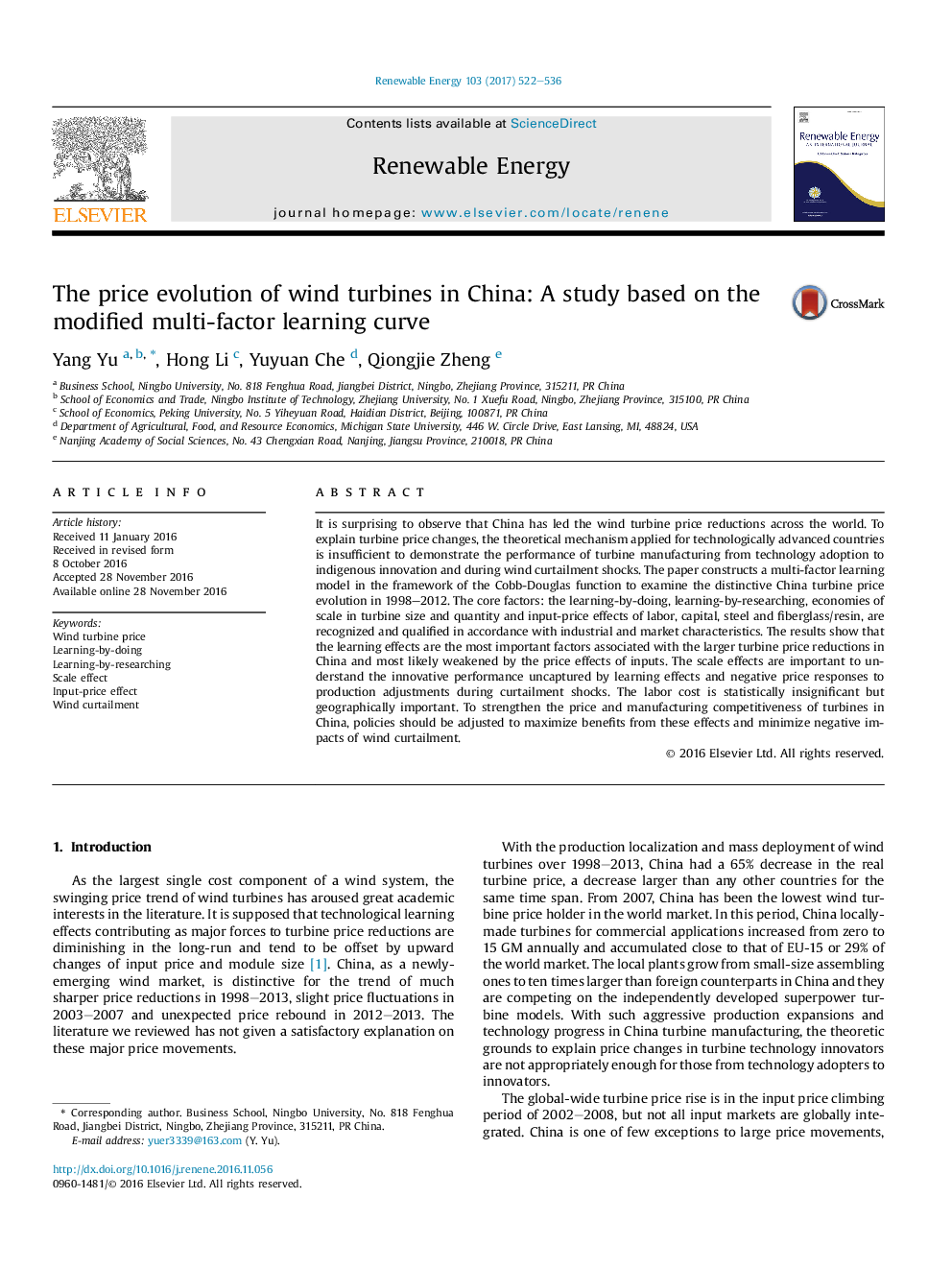| Article ID | Journal | Published Year | Pages | File Type |
|---|---|---|---|---|
| 4926594 | Renewable Energy | 2017 | 15 Pages |
Abstract
It is surprising to observe that China has led the wind turbine price reductions across the world. To explain turbine price changes, the theoretical mechanism applied for technologically advanced countries is insufficient to demonstrate the performance of turbine manufacturing from technology adoption to indigenous innovation and during wind curtailment shocks. The paper constructs a multi-factor learning model in the framework of the Cobb-Douglas function to examine the distinctive China turbine price evolution in 1998-2012. The core factors: the learning-by-doing, learning-by-researching, economies of scale in turbine size and quantity and input-price effects of labor, capital, steel and fiberglass/resin, are recognized and qualified in accordance with industrial and market characteristics. The results show that the learning effects are the most important factors associated with the larger turbine price reductions in China and most likely weakened by the price effects of inputs. The scale effects are important to understand the innovative performance uncaptured by learning effects and negative price responses to production adjustments during curtailment shocks. The labor cost is statistically insignificant but geographically important. To strengthen the price and manufacturing competitiveness of turbines in China, policies should be adjusted to maximize benefits from these effects and minimize negative impacts of wind curtailment.
Related Topics
Physical Sciences and Engineering
Energy
Renewable Energy, Sustainability and the Environment
Authors
Yang Yu, Hong Li, Yuyuan Che, Qiongjie Zheng,
